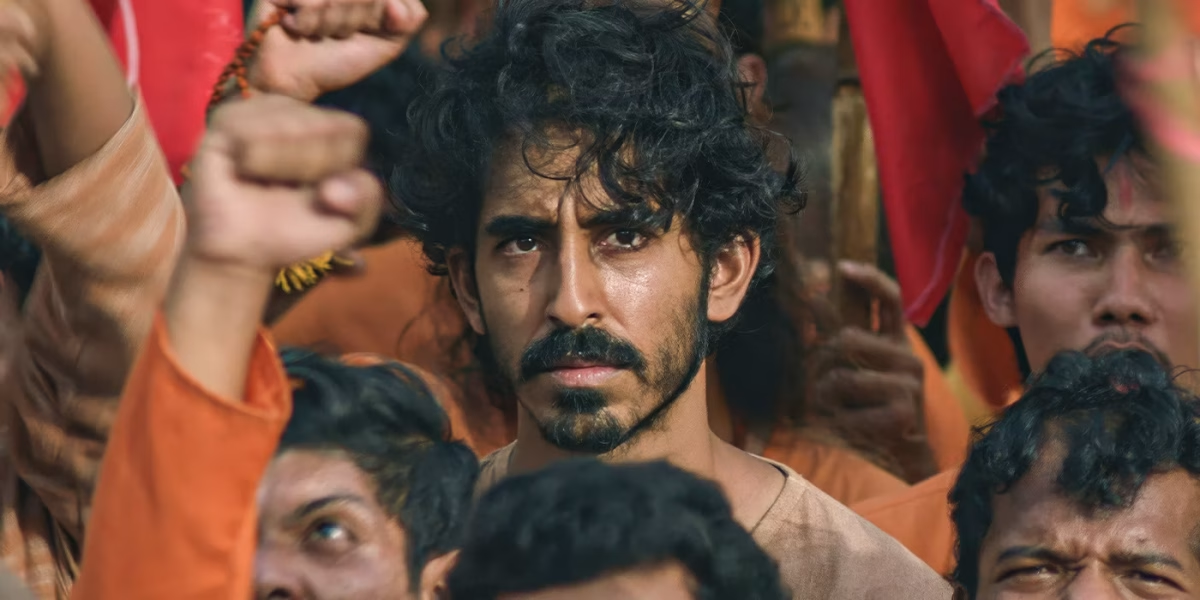As actor Dev Patel stood in front of the audience at the film festival “South by Southwest,” crying tears of joy amidst a two-minute standing ovation, audiences around the world quickly realized that Patel’s new film had serious potential. Released theatrically on Friday, April 5, “Monkey Man” serves as the directorial debut for Patel. The film revolves around Kid (Patel), a young man who seeks revenge for the death of his mother (Adithi Kalkuntle) against corrupt police officer Rana (Sikandar Kher). Kid slowly delves into a large Indian crime ring to reach Rana, joining forces with femme fatale Sita (Sobhita Dhulipala) to combat India’s systemic challenges of corruption and poverty.
The film opens with Kid’s mother narrating the story of Hanuman, a Hindu god who is half-monkey, half-man and an icon of courage and strength in mythology. As the audience becomes immersed in the natural forest sounds and Indian flute music that accompanies his mother’s retelling, it becomes clear that “Monkey Man” is no ordinary action film as it sets itself up to be a refreshing new take on cultural representation in Hollywood.

As the director, Patel fully leans into the cultural aspect of the film, with the story of Hanuman paralleling Kid’s character arc. Symbols such as the monkey mask that Kid dons as he fights in the ring against various opponents throughout the movie portray this, as well as an extended sequence in which Kid is forced to face his past trauma and essentially transforms into the half-monkey, half-man that Hanuman is. Furthermore, the soundtrack seamlessly integrates other elements of Indian culture. The film stays true to its culture by featuring songs like “Beware of the Boys (Mundian To Bach Ke),” a hardcore Punjabi rap song, and “Ooh La La,” a more upbeat Hindi song from the Bollywood film “The Dirty Picture.” A memorable use of music is found in a mesmerizing sequence in which Kid physically trains while his mentor plays the tabla, a traditional Indian instrument.
“Monkey Man” is an action film through and through, and it excels in that aspect. In interviews, Patel has described how the John Wick franchise, Bruce Lee and many other iconic action stars influenced the making of the film, but he seems to take a more experimental approach to fight sequences compared to a typical action movie. “Monkey Man” boasts many prolonged hand-to-hand combat sequences; the cinematography takes a fluid approach and utilizes innovative camera angles, almost making viewers feel as if they are being thrown around by Kid himself. While this works for the most part, it sometimes leaves audience members confused about what they’re supposed to be watching rather than dazzled. The fight scenes also utilize a strong sense of space: whether Kid is fighting off henchmen in the tight quarters of an elevator or a large restaurant kitchen, complex fight choreography combined with high-energy environments allow the intensity to surge. The film also warmly embraces its R-rating, with almost all the fights being nail-biting, brutal and gory. Complemented by the gleaming night lights of Yatana — a fictionalized version of Mumbai in which the film is set — or the ambient dim lights of the slums’ boxing ring, these scenes serve as a visual treat.
While “Monkey Man” may seem like a straightforward revenge story, it also uncovers common social injustices in India with nuance. As Kid narrates in the trailer, “In this city, the rich don’t see us as people,” emphasizing the stark class discrepancies in the country. The film addresses corruption through the dishonest cop, Rana, and the oppression that the lower class faces through a lack of proper legislation and care. It also shines a light on the Hijra community, as many of the people who help Kid recover and later on fight alongside him are part of this community. The plot doesn’t follow the standard progression but rather offers a push and pull toward the main character’s ultimate triumph, which furthers the growth of the character as we see Kid constantly rising above his setbacks.

The dialogue in the movie is minimal, and the film instead relies heavily on the actors’ body language. A majority of the film is comprised of combat scenes which serve to be very physically demanding. As these scenes progress, Kid goes from being impulsive to calculative and abrasive with the way he fights. His actions are more deliberate as the movie progresses into the second half — he pauses between punches and his actions become more impactful as he gains more practice and experience, knocking his opponent out with one move. Dev Patel gives a captivating performance and entices the audience with his expressive gaze, speaking volumes about the talent he displays throughout the film.
While the film suffers slightly from erratic pacing and underutilized characters, Patel delivers a powerhouse performance in front of the camera and a technical marvel behind it. Ultimately, “Monkey Man” is a cultural reset in Hollywood, as it is the first of its kind to combine the culturally resonant tale of Hanuman with a blockbuster-style action genre, doing so impactfully. The film provides a new take on a traditional tale and emphasizes the need for more representation in film.
4/5













